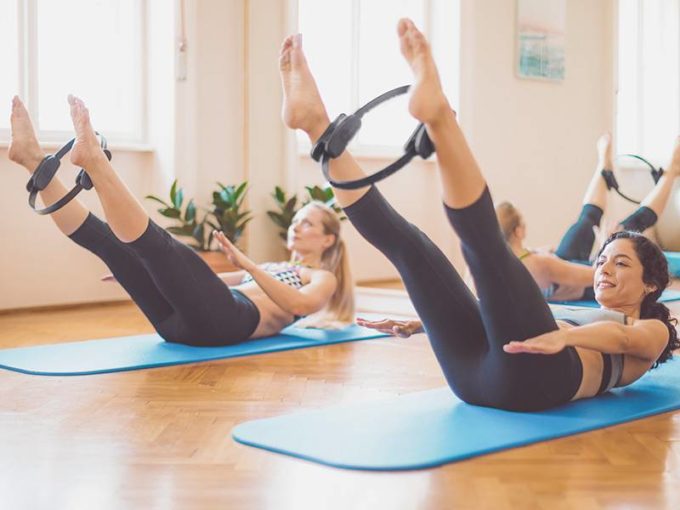Articles, In the Press, Resources, Yoga Medicine® News
Yoga Versus Pilates: How to Figure Out Which Workout Is Better for You
By Casey Clark for The Thirty.
If you’ve clicked on this story, then you’re likely interested in learning more about the differences between yoga and Pilates. Whether you’re a yogi or Pilates enthusiast, there’s always something to be learned when it comes to these popular practices. You might have taken these classes in the past, but only the surface can actually be covered in an hour-long session.
In essence, both yoga and Pilates focus on establishing a deep mind-body connection. Also, they can both be done on yoga mats in many cases and with stretchy apparel to help promote flexibility. However, the way in which you move and hold your body and muscles varies greatly between yoga and Pilates.
To help break down the idiosyncrasies between the two low-impact modalities, we’ve tapped yoga instructors and Pilates experts to break down what makes each unique and also what makes them similar. Plus, find out more about the benefits and how you can incorporate these forms of movement into your daily routine. Whether you’re healing from an injury or just looking for a new workout regimen, it’s never too late to add some different exercises to your rotation.
What is Yoga?
You might think of yoga as holding the Tree Pose for a few minutes, but the practice can be as expansive as you want it to be. “Yoga is a discipline that links the mind, body, and breath through movement and asanas (postures),” says Annie Woods, Yoga Medicine 500hr teacher and student. “We use these asanas to help move the body in ways that promote hydration for the tissues, strength, and flexibility in the muscles, as well as balance and proprioception.”
The movement in combination with breathing techniques makes yoga suitable for calming the nervous system, improving focus, and clearing away some of the unwanted noise—even if just for a short time.
Depending on what you’re looking to achieve, the sequence of poses you follow in yoga practice will set the tone for your session. Essentially, you’re your own guide whether you decide to keep it simple or increase the intensity. “In a Hatha-based practice, you are in poses held statically for an extended amount of time. This can strengthen the body by holding isometric muscular contractions,” says Zac Armstrong, a master trainer with YogaSix. “However, in a Vinyasa-based practice, you will typically flow through poses with a Chaturanga, ‘yoga push-up,’ between poses at a moderate pace, which can increase cardiorespiratory fitness and endurance.”
Benefits of Yoga
Like any exercise, yoga helps get the heart rate up and break a sweat (even if it’s not as much as a Crossfit class). “Most yoga classes work to approach the body as a whole, working in its entirety to create harmony and balance through movement and breath,” says Woods.
Additionally, there are many different types of yoga methods, making it accessible to those of different fitness levels and interests. “If you’re looking for a slow, deep stretch that calms your nervous system and helps you unwind, restorative yoga or Yin yoga might be your thing,” says Woods. “If you’re looking for a physically demanding, highly focused, and disciplined challenge, then power yoga or Ashtanga yoga might be for you.”
What is Pilates?
In general, Pilates requires an individual to develop a strong connection between their mind and body. “Pilates is a workout that incorporates the full body by making sure the spine is moved in every direction, creating an emphasis on the core,” says Vanessa Johnson, NCPT, director of education for Club Pilates. “Every workout is meticulously thought out, ensuring that the body is moving in all planes of motion. It’s also a low-impact workout, meaning it’s customizable for individuals who may have restrictions with other rigorous workout regimens.”
According to Johnson, Pilates instructors use descriptive terminologies and concepts that help the client to create a strong level of awareness of where their body is in space, also referred to as proprioception. During a typical Pilates workout, there is a strong focus on building strength and stability in the core and the spine whether you’re doing Pilates on the reformer or mat. Some of the most popular Pilates moves include swimmers, mermaids, bridges, twists, and side bends.
However, Armstrong shares that there are some slight differences between the two. “In mat Pilates classes, there is a lot of focus on holding the C-curve to strengthen the lower abdominals,” he says. “In reformer classes, the focus is typically controlling eccentric movements.”













